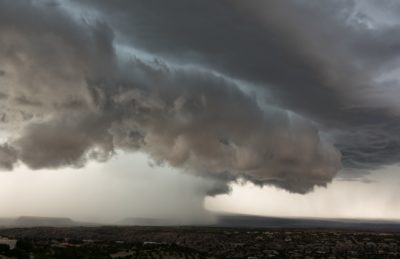
“Next Level” Engineering?
Why the need for “Next Level” Engineering? Hurricanes, High-Winds, and Floods… Oh My!
Here’s the Challenging Truth:
 Scientists have reached a consensus that weather, climate and extreme events of the past generally will not be representative of those of the future.
Scientists have reached a consensus that weather, climate and extreme events of the past generally will not be representative of those of the future.
Of course, with rain comes wind. The effects of wind on building design is likely the most misunderstood force by builders and owners. In Texas, wind design is most often associated with coastal construction or the so called “hurricane prone region” when in fact, minimum code wind gust speeds in Texas for a Category II structure vary only from 150 mph on the coast, to 103 mph at its least inland. The effect of wind on coastal regions tends to be exacerbated by the velocity of sustained winds and are certainly made sensational by the news coverage of the widespread effects. However, a 103 mph gust occurring for instance as part of a storm front, while isolated to a small and sometimes single structure, can be just as devastating to the property and risk to life.
Weather has changed. This poses a challenge to civil and structural engineers; and makes the choice in engineers more important than ever for architects, investors, and developers alike.
What is C|P|H Structural Engineering doing to help?
Two projects in two states, survived two hurricanes over the past 2 years. Not only are they still standing strong, but aside from missing a few shingles, they were both completely unscathed.
The Vantage at Panama City, Florida withstood Hurricane Michael in 2018. A sister development, the Vantage at Corpus Christi, Texas reported that no damage was endured in 2017 while Hurricane Harvey pummeled the Texas Coast.
While CPH recognizes the need for proper load resistance in structures for wind, we also recognize the need for economy in construction. As appointed Windstorm Engineers, we make a special effort to incorporate secure wind resistance while keeping construction costs in mind. Our expertise in code-compliant wind-design and inspection is as valuable along coastlines as it is inland.
References:
ASCE (2013) Bridging the Gap between Climate Change Science and Civil Engineering Practice, ASCE Committee on Adaptation to a Changing Climate, will be sent in summer 2013 to ASCE institutes, divisions and councils for review and comment and will be available on the ASCE website.
NOAA updates Texas rainfall frequency values at https://www.noaa.gov/media-release/noaa-updates-texas-rainfall-frequency-values
National Academies (2012). A National Strategy for Advancing Climate Modeling, National Academies Press.
NCA (2013) Federal Advisory Committee Draft Climate Assessment available at http://ncadac.globalchange.gov/
NSIDC (2012) Arctic Climatology and Meteorology Glossary (http://nsidc.org/arcticmet/glossary/weather.html; accessed October 9, 2012).
NWS (2013) National Weather Service Glossary (http://w1.weather.gov/glossary/; accessed on March 14, 2013


